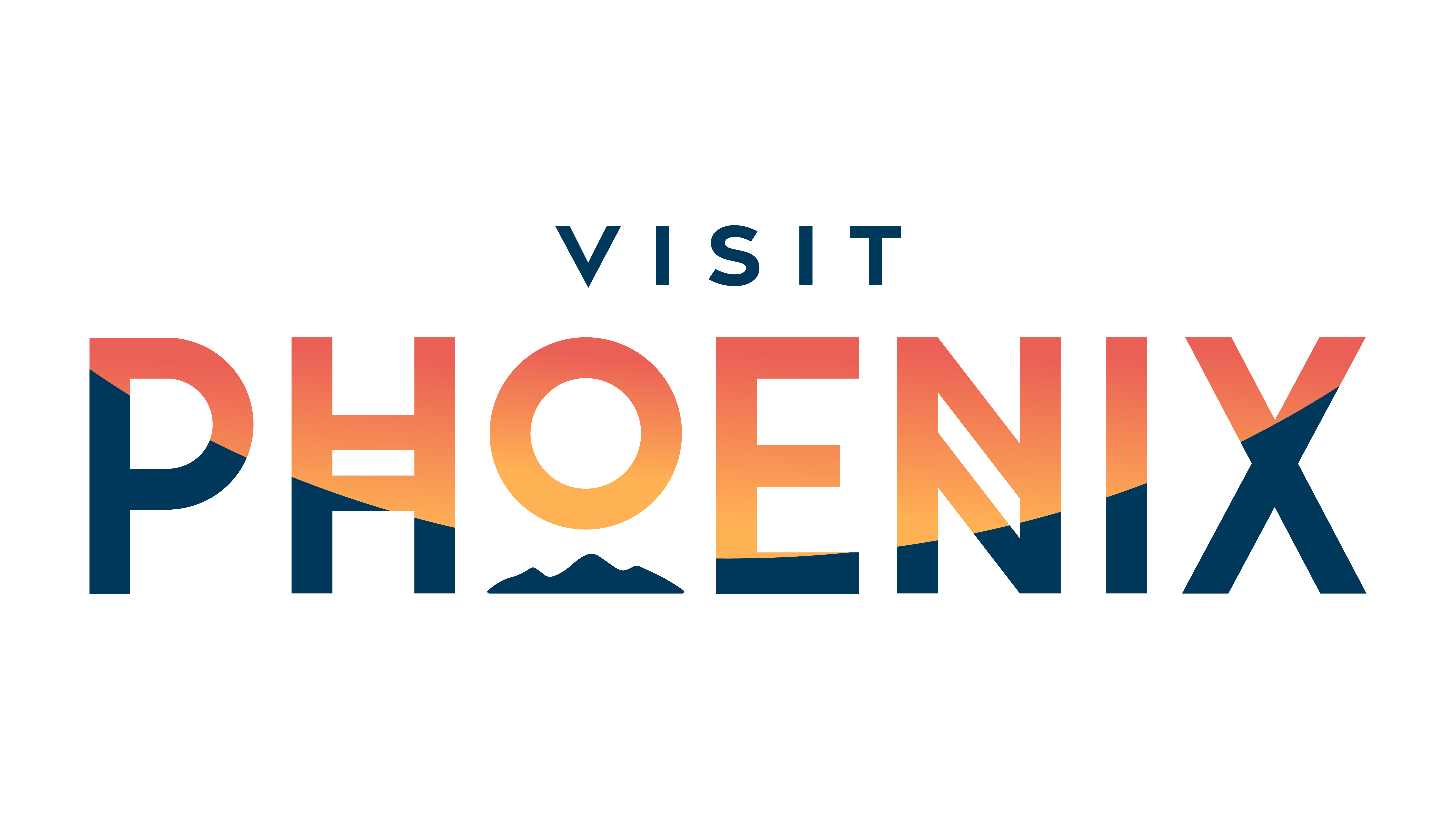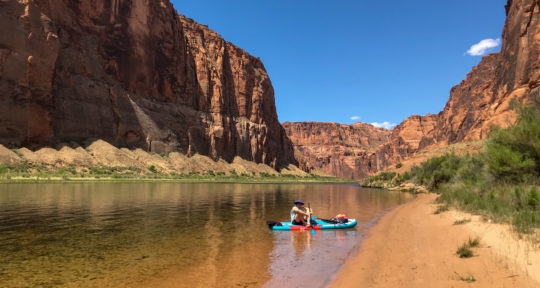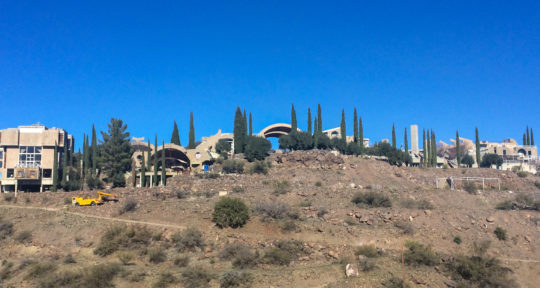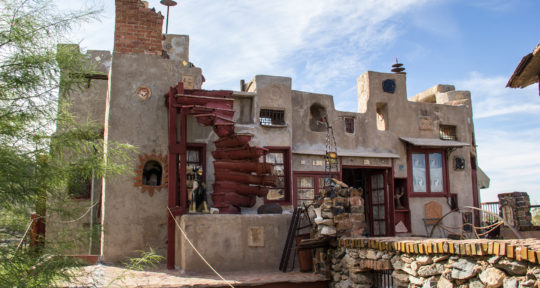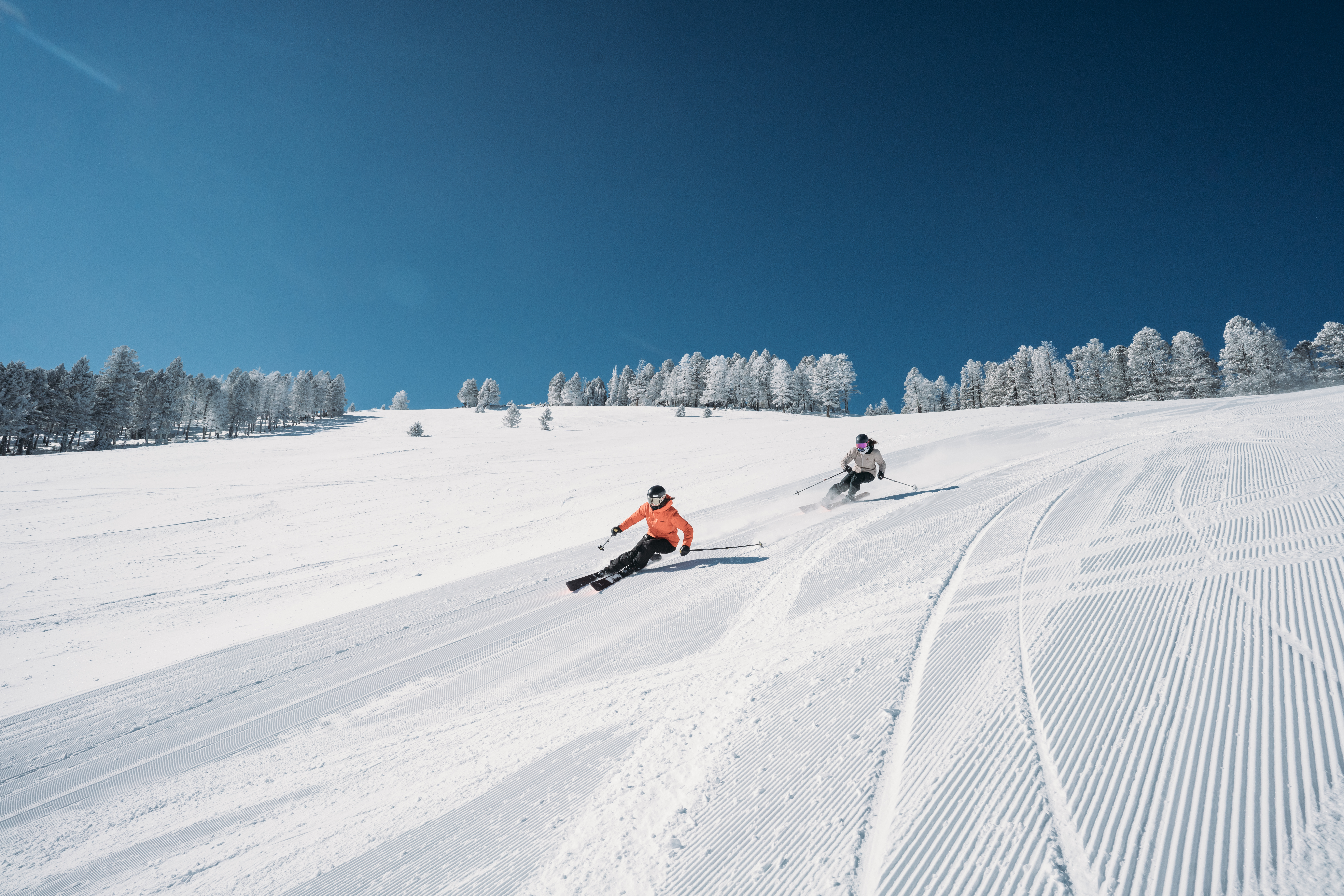Water activities probably aren’t the first thing that come to mind when thinking of Phoenix, Arizona. But as I discovered on a recent kayaking trip, there’s more water in the Sonoran Desert than you might think—you just have to know where to look.
I had heard about some of Phoenix’s lakes and reservoirs, but didn’t know much about them, let alone where they were located. After doing a bit of research, I stumbled upon the REI Co-op Adventure Center—a division of the esteemed outdoor brand that offers guided tours throughout Greater Phoenix. I was surprised to see that the Co-op offered a wide variety of outdoor adventures, including stand up paddleboarding and kayaking.
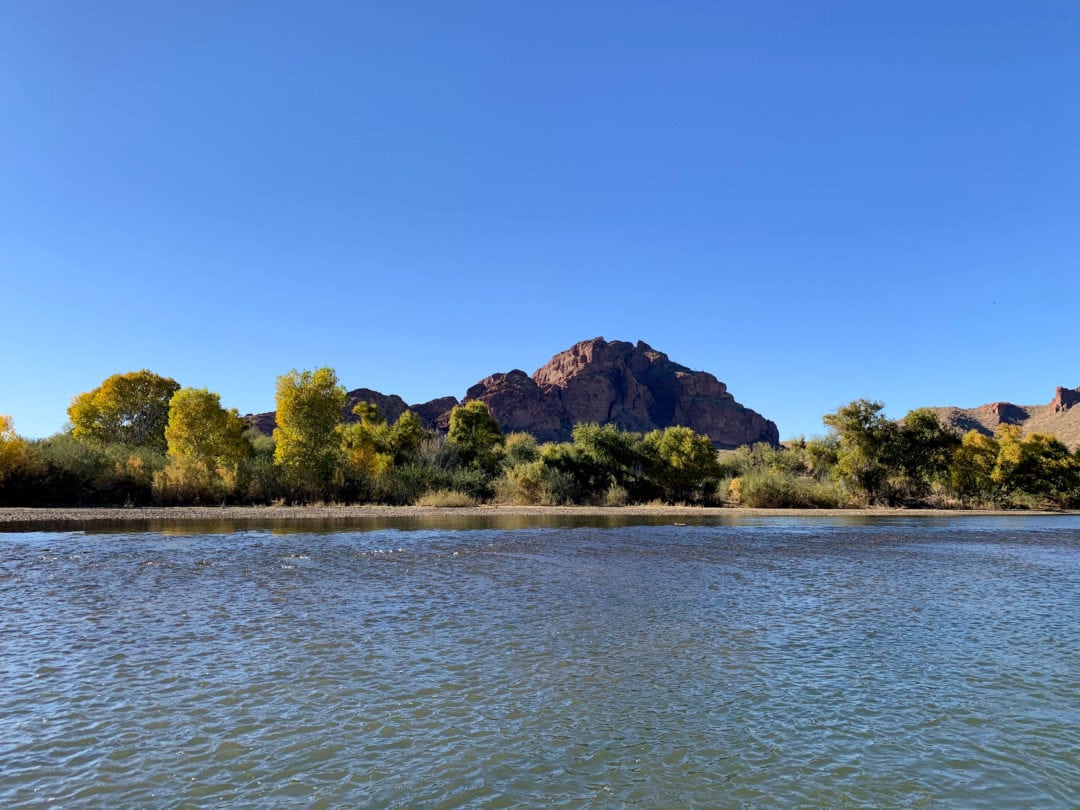
“REI’s tours are led by carefully trained outdoor guides who emphasize the values of the Co-op,” says Annemarie Kruse, manager of destination sales and marketing at the REI Co-op Adventure Center. “Our tours educate participants about the natural history, geology, and human history of the places they’re exploring in. Each excursion is carefully adapted to the participants interests and skill level to create the most enjoyable and memorable experience.”
I decide to sign up for a half-day kayaking tour down Arizona’s Lower Salt River. And what I thought would be an easy afternoon floating down the river turned into an adventure I’ll never forget.
Horses? What horses?
On a sunny winter day in December, very typical of Phoenix, I drive to an undisclosed location near Tonto National Forest. It’s here that I meet Ben Papps, my REI adventure guide for the day. He greets our small tour group and then proceeds to load us all into a truck, where we drive another 20 minutes through a rocky, cactus-studded landscape. The feeling among our tour group is unspoken, yet unanimous: This is already quite the adventure.
Our kayak tour begins at the Phon D Sutton Recreation Area, a small riverside park 30 miles northeast of downtown Phoenix. The Salt River is about 200 miles long, but we’re only exploring a very small segment of it today. As the kayaks are unloaded and carried to the edge of the river, I stop to admire the view of the Mazatzal Mountains, with its iconic Four Peaks landmark that seems to pierce the sky.
One of the assistants unloading the kayaks casually tells me to keep an eye out for wild horses along the water. “Horses? What horses?” I think to myself. I scan the horizon and surrounding landscape but there is too much commotion at the launching point and all wildlife seems to have vacated the premises, so I move on.
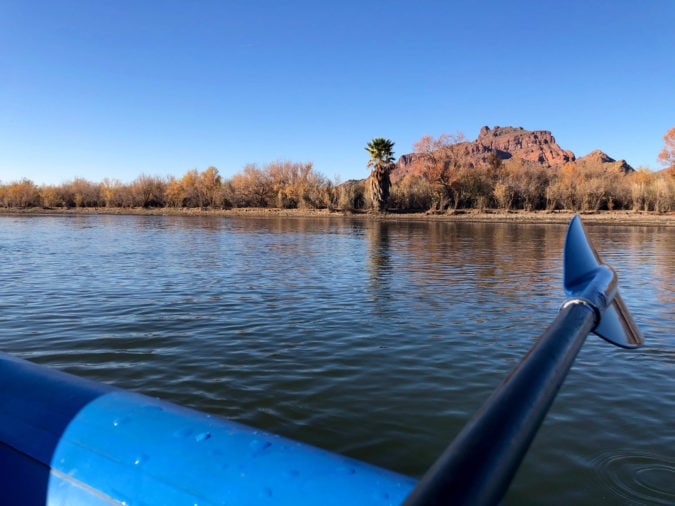
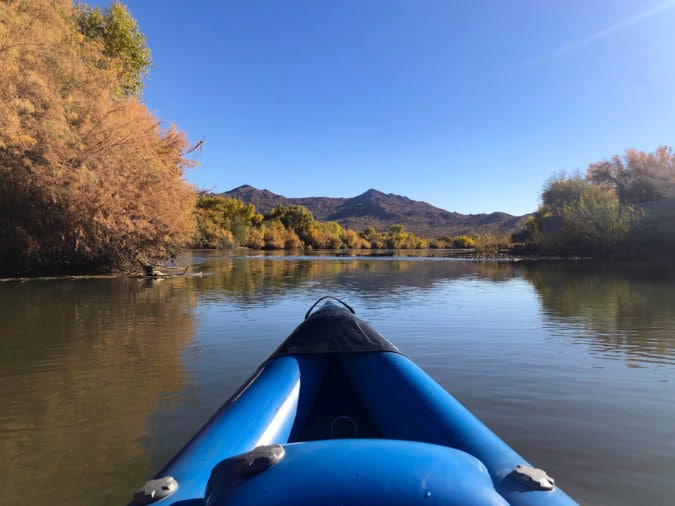
Like an old Western movie
After Papps gives us a few quick tips on paddling form and controlling our balance inside the kayaks, we hop into our respective watercrafts and push off. I marvel at how quiet it is. Almost immediately, the noise from other people fades away and the sounds of nature fill my ears. I become aware of reeds rustling in the wind, the gentle waves lapping against the side of the kayak, the splashes of my paddle, and the chirping of different birds from across the shore.
As we slowly glide down the river, the desert landscape gives way to tall reeds, mesquite, and cottonwood trees on display in gold, yellow, and green. As Papps tells us about the local vegetation, I’m struck by the contrast of the deep green plants that edge the river and the distant views of golden, barren mountains. This is just the first of many times that I will pause to marvel at the contrasting beauty of Phoenix.
We’re firm believers that time spent outdoors can help people develop a personal connection to the natural environment
A few hundred yards down the river, Papps points out two bald eagle nests, safely tucked away in nearby trees. The eagles themselves aren’t around but the massive collection of sticks and branches comprising the two nests is still impressive.
An hour later, I’m still riding high from the eagle nests and gorgeous views when I see something large and white slowly move along the water’s edge. I paddle faster, straining my eyes to get a better glimpse at this unusual shape emerging from the tall grass. And sure enough, a lone, wild horse steps out for a drink.
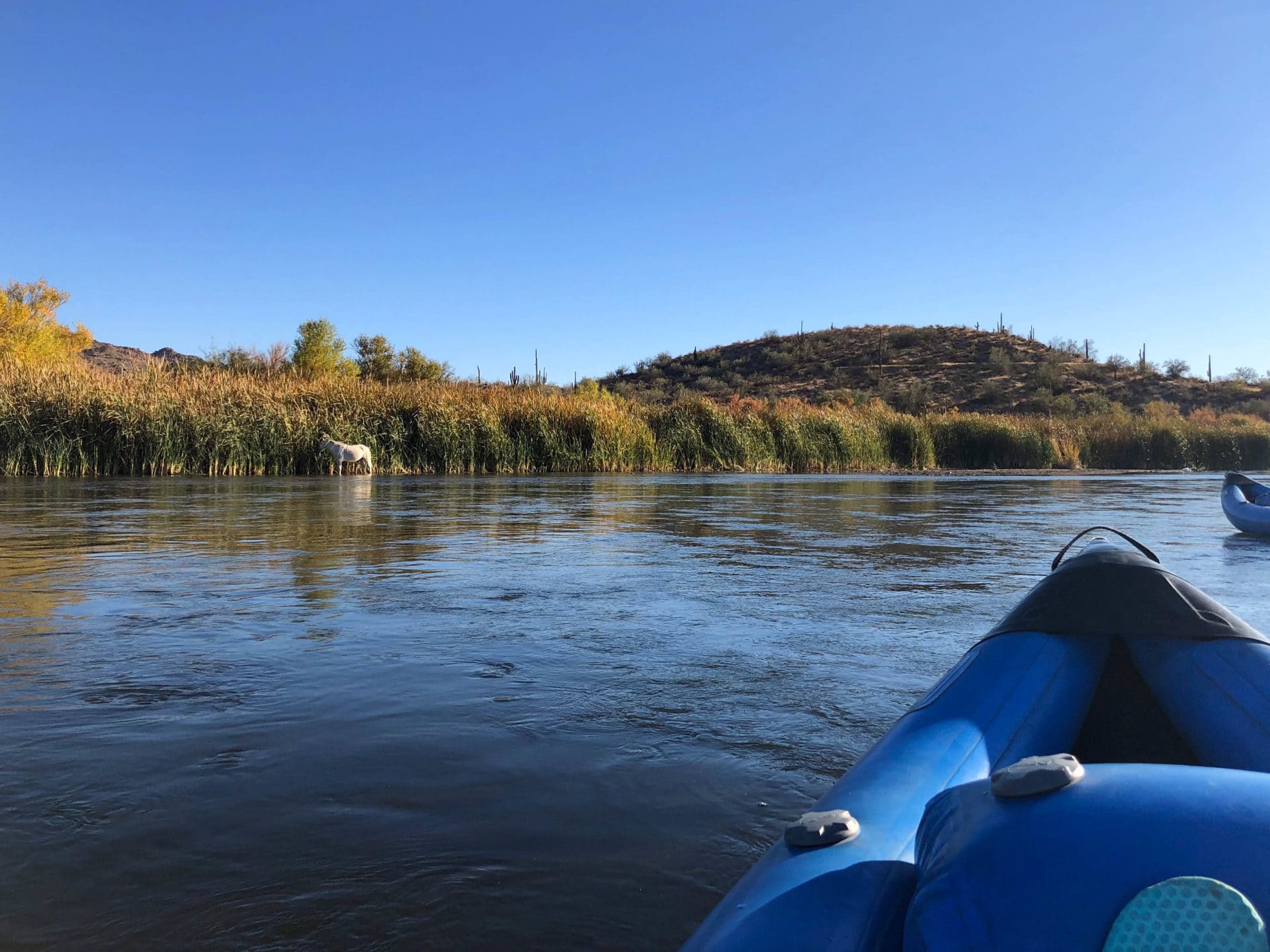
Our group slows down and maneuvers to the other side of the river in an effort not to disturb the magnificent creature. I stop paddling and let the current drag me along, savoring every moment. The horse doesn’t seem to care or notice us as it stands ankle-deep in the river, chewing on grass, with the sun reflecting off its brilliant, white coat. As if on cue, a flock of ducks takes to the air and fills the sky. With the desert peaks in the distance, the horse and river in front of me, and the ducks soaring overhead, I suddenly feel as if I’m in an old Western movie. It’s an incredibly picturesque scene, and one I never expected to witness so close to a major city.
But then I remember I’m not actually in a movie—I’m sitting in a kayak and I still have more river to explore. As the current takes us past the wild horse and the ducks continue their flight, I pick up my paddle and press on, appreciating that water and nature isn’t as far away as one might think.

Beyond the paved streets and buildings
As the sun begins to drop lower in the sky, I see our end point up ahead. The silence of the desert is broken by cars passing on a nearby highway and the splashes of swimmers. I aim my kayak toward the shore, and as I step out back onto dry land, I marvel at the novelty of it all.
“So many people join a tour with no expectation beyond that it’s ‘something to do.’ But through their experience they walk away impacted by the Sonoran Desert,” says Kruse. “We hope that our guests are surprised, delighted, and excited by the natural world around them during each tour with us. We’re firm believers that time spent outdoors can help people develop a personal connection to the natural environment, promoting individual wellbeing, and creating good stewards of our outdoor places.”
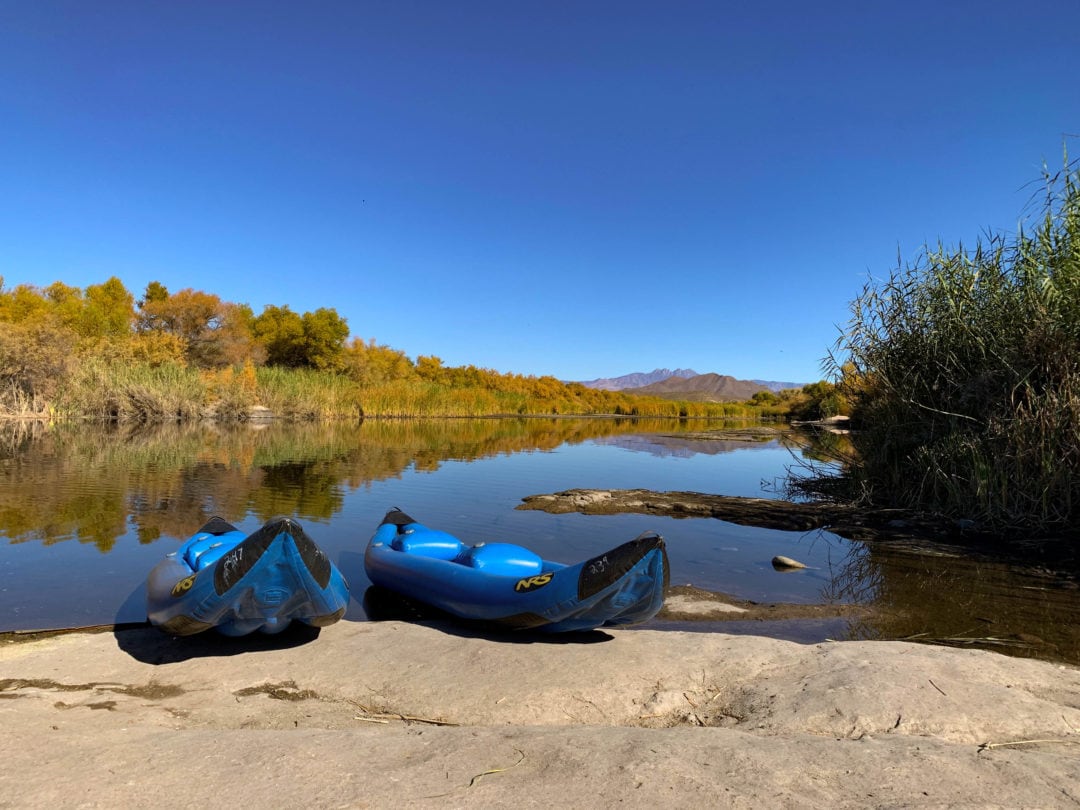
And she’s right. I’ve been both delighted and refreshed by this trip, and I’m already planning to get outside and kayak more. As I head up the riverbank toward the truck that will take me back to my car, I feel more connected to this rugged and natural world—a world that lies just beyond the city’s paved streets and concrete buildings.
